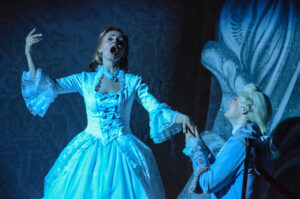Exploring Unique Singing Traditions Worldwide
Exploring Unique Singing Traditions Worldwide
Around the globe, music transcends language barriers, connecting us through the universal language of melody and rhythm. Among the world’s rich tapestry of cultures, several unique singing styles stand out, not only for their vocal practices but also for their deep cultural significance. This exploration into global singing uncovers unique singing styles and vocal practices that define cultures across the world.
Tuvan Throat Singing
Originating from the Tuva Republic in Russia and Mongolia, throat singing is a captivating vocal art that allows singers to produce multiple pitches simultaneously. This technique, a blend of harmonics crafted by manipulating the vocal cords and mouth shape, has also gained popularity in other parts of Asia and among indigenous communities in Canada, showcasing its wide appeal and cultural significance.
.
Khoomei
Closely related to Tuvan throat singing, Khoomei is a type of overtone singing practised in Mongolia. Performers produce a fundamental pitch and, simultaneously, one or more pitches over that.
Inuit Throat Singing
Originally a form of entertainment among Inuit women in Canada, this vocal practice involves two performers standing face-to-face to create a range of sounds mimicking natural noises, engaging in a sort of musical competition.

Cantù a Tenòre
From Sardinia, Italy, this polyphonic singing style features a group of four male singers, each contributing different vocal parts to create a rich, textured sound. It’s traditionally performed a cappella and has roots in pastoral and farming culture.
Kulning
An ancient Scandinavian singing technique, Kulning was used by women to call livestock down from the mountains. Its high-pitched, haunting tones are designed to carry across long distances.
African Polyphony
Originating from the vast and culturally diverse African continent, polyphonic singing involves multiple vocal parts sung simultaneously, creating a rich, layered sound. This style is particularly prevalent in regions like Central Africa, where the Pygmy communities use it to embody the lush textures of their forest home.
Opera
Rooted in 16th-century Italy, Opera combines music, drama, and visual arts to tell compelling stories. Known for its powerful vocal technique, including the use of vibrato and extensive range, Opera singers master the art of projecting their voice without amplification, making it a pinnacle of vocal performance.

Carnatic Music
Carnatic music, a classical tradition from South India, is characterised by its intricate ragas (melodic frameworks) and talas (rhythmic cycles). Singers in this genre are renowned for their ability to improvise and their detailed exploration of notes within a raga, offering emotionally charged and spiritually uplifting performances.

The Significance of Singing Traditions Worldwide
Singing traditions are not just an expression of cultural heritage; they are the heartbeat of communities around the globe, embodying the essence of collective history, spirituality, and identity. The diverse vocal practices observed in unique singing styles across different cultures highlight the global singing tradition’s rich tapestry. Through the power of voice, these traditions tell stories, convey emotions, and connect generations, offering a window into the diverse tapestry of human culture.
Vocal Practices as Cultural Pillars
Each culture’s unique singing style serves as a pillar of its identity, preserving ancient stories and wisdom. From the haunting calls of the Scandinavian Kulning, designed to communicate across vast landscapes, to the intricate polyphonies of Georgian chants that have been passed down through centuries, singing traditions are a testament to human creativity and the profound connection between music and the environment.
Preservation and Evolution
As the world becomes increasingly globalised, the preservation of unique singing styles becomes ever more important. Preserving these unique singing styles is crucial for the continuation of rich vocal practices in our global singing heritage. At the same time, the evolution of these traditions, influenced by contemporary sounds and technologies, demonstrates the dynamic nature of cultural expression, ensuring that these ancient practices continue to resonate with new generations.
Conclusion
As we celebrate the rich mosaic of global singing traditions, we recognise the power these practices have in connecting us to our shared humanity and the diversity of our cultures. For those inspired by this exploration and eager to embark on their own musical journey, PaatuClass offers a unique opportunity. With this genre-free course, you can dive into singing across languages and styles, focusing purely on application. Whether you’re drawn to the intricate melodies of Carnatic music or the harmonious blend of polyphonic singing, PaatuClass transcends traditional boundaries to foster your growth as a versatile singer. Start your journey with PaatuClass today and embrace the legacy of global singing traditions in your own voice!





